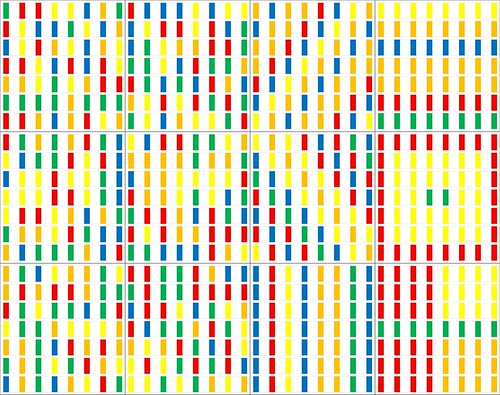Wednesday, March 04, 2015
Which image did You / Your Opponent See
Heine, Takata, & Lehman's study (2000) based upon that of Takata (1987) are the only studies that I know of that claim to show that Japanese are self-critical behaviourally. These studies make this claim due to the fact that Japanese require more information to make a decision upon who is better at a task, themselves or their opponent, when they are shown information that suggests that they are better than when they are shown information that they were worse. These requests for more information are behavioural. But the judgement they are making is entirely linguistic. They being asked to say "I was better than the other guy," which the Japanese have no desire to say or "I was worse than the other guy," which the Japanese have no problem saying.
However, in my view, the Japanese do have a desire to look better, see themselves as cuter than everyone else (Google ”自分が一番かわいい” jibun ga ichiban kawaii). In order to test this perhaps one could ask Japanese to complete the same test asking the difference in number of say red and blue rectangles, regarding images containing both random and regular patterns of coloured rectangles.
Then one could ask about a series which is in fact different, "Did you, or your partner see this image?" While disguised as a memory test, it would be asking who got the easy task. I hypothesise that Japanese would be more inclined to attribute the easy image (those on the right above) to their partner, and the difficult image (those on the left above) especially when told that the are told that their opponent did better, but I am not sure.
Another problem is that the patterned images are easier to remember than the random images so if different then all subjects would be inclined to attribute them to the partner. So therefore, the patterned images could be the same as those presented to the subject. In other words, in order to visually self-enhance subjects would be required to attribute an easy image to their partner which they had in fact themselves seen. I think that the Japanese may be so visually self-enhancing that they may do this.
Takata, T. (1987). Self-Deprecative Tendencies in Self Evaluation Through Social Comparison. The Japanese Journal of Experimental Social Psychology, 27(1), 27–36. doi:10.2130/jjesp.27.27 Heine, S. J., Takata, T., & Lehman, D. R. (2000). Beyond self-presentation: Evidence for self-criticism among Japanese. Personality and Social Psychology Bulletin, 26(1), 71–78. http://flic.kr/p/rbmV3n
However, in my view, the Japanese do have a desire to look better, see themselves as cuter than everyone else (Google ”自分が一番かわいい” jibun ga ichiban kawaii). In order to test this perhaps one could ask Japanese to complete the same test asking the difference in number of say red and blue rectangles, regarding images containing both random and regular patterns of coloured rectangles.
Then one could ask about a series which is in fact different, "Did you, or your partner see this image?" While disguised as a memory test, it would be asking who got the easy task. I hypothesise that Japanese would be more inclined to attribute the easy image (those on the right above) to their partner, and the difficult image (those on the left above) especially when told that the are told that their opponent did better, but I am not sure.
Another problem is that the patterned images are easier to remember than the random images so if different then all subjects would be inclined to attribute them to the partner. So therefore, the patterned images could be the same as those presented to the subject. In other words, in order to visually self-enhance subjects would be required to attribute an easy image to their partner which they had in fact themselves seen. I think that the Japanese may be so visually self-enhancing that they may do this.
Takata, T. (1987). Self-Deprecative Tendencies in Self Evaluation Through Social Comparison. The Japanese Journal of Experimental Social Psychology, 27(1), 27–36. doi:10.2130/jjesp.27.27 Heine, S. J., Takata, T., & Lehman, D. R. (2000). Beyond self-presentation: Evidence for self-criticism among Japanese. Personality and Social Psychology Bulletin, 26(1), 71–78. http://flic.kr/p/rbmV3n
Labels: autoscopy, blogger, cultural psychology, japanese culture, nihonbunka, 日本文化, 自己視
This blog represents the opinions of the author, Timothy Takemoto, and not the opinions of his employer.

